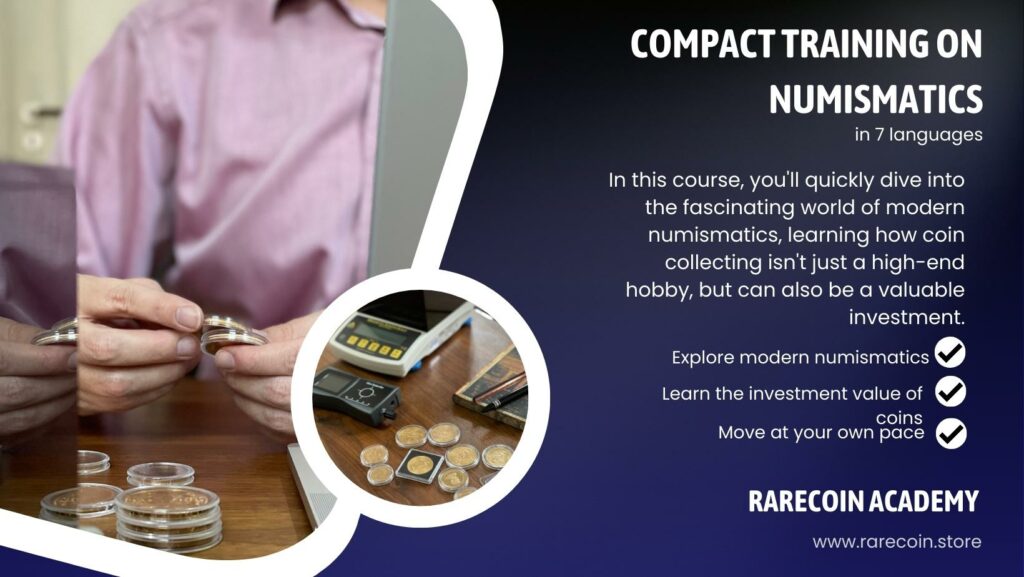
Part 3: Coin Materials and Properties
- Metals used in modern coinage: gold, silver, platinum, copper, etc.
- Factors that determine the value of modern numismatic coins
- FAQ on the topics: Coin materials and properties
The world of coinage is incredibly fascinating and diverse. Upon closer inspection, it quickly becomes clear that each coin tells its own story due to the choice of materials and underlying design.
Main metals in today’s coinage:
Gold : This precious metal has established itself throughout history as a top choice for prestigious coins, known for its everlasting shine and impressive durability.
Silver : Thanks to its unique and bright shimmer, silver is a material that has always been valued by coin minters around the world.
Platinum : A new player in the world of coins , platinum has quickly gained popularity due to its rarity and industrial value.
Copper : This more classic coin material is best known for its warm, reddish hue and excellent malleability.
In addition to these key players, there are other metals, such as zinc, nickel or palladium, that can be incorporated into the coinage process depending on a country’s specific goals and resources.
What contributes to determining the value of modern coins?
Metal content : This is the intrinsic value of a coin, which is directly dependent on the metal it contains.
Condition and quality : Perfect, well-preserved coins naturally attract more attention and can therefore fetch higher prices. Example: USA – American Eagle Gold Proof Set – 2006 – NGC PF70 UCAM
Historical context : Even newly minted coins can increase in value due to special historical references or events.
Demand and Attractiveness : Some coins are particularly in demand because of their unique design or special series, which can increase their value. Example: “ Save Our World ” coin series from Russia
Mintage Numbers : A limited mintage can definitely add to the overall value of a coin. Example: Big Five series (edition – 500 pieces per animal motif)
Special features and defects : It is often the small imperfections or special features of a coin that are of particular interest to collectors.
Country of Origin : The country from which a coin comes, particularly if it has a rich coinage tradition, can also influence its value. Example: American Lady Liberty
Overall, it shows that modern numismatics is a profound and complex field. It is a mix of material, history, design and many other factors that combine to influence a coin’s value in the eyes of collectors and investors.
Further materials :
Precious metals – gold, platinum, palladium or silver? Which metal should I invest in?
Numismatics 1×1: Immerse yourself in the world of collecting rare coins
Materials and Qualities of Coins: Investments and Hobbies with Financial Benefits

